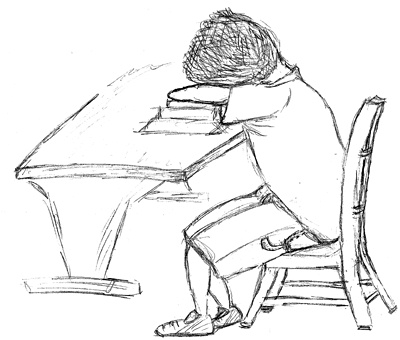All Nonfiction
- Bullying
- Books
- Academic
- Author Interviews
- Celebrity interviews
- College Articles
- College Essays
- Educator of the Year
- Heroes
- Interviews
- Memoir
- Personal Experience
- Sports
- Travel & Culture
All Opinions
- Bullying
- Current Events / Politics
- Discrimination
- Drugs / Alcohol / Smoking
- Entertainment / Celebrities
- Environment
- Love / Relationships
- Movies / Music / TV
- Pop Culture / Trends
- School / College
- Social Issues / Civics
- Spirituality / Religion
- Sports / Hobbies
All Hot Topics
- Bullying
- Community Service
- Environment
- Health
- Letters to the Editor
- Pride & Prejudice
- What Matters
- Back
Summer Guide
- Program Links
- Program Reviews
- Back
College Guide
- College Links
- College Reviews
- College Essays
- College Articles
- Back
Essays: A Classification of Classification
There are three different types of classification essays: the good, the bad, and the satisfactory. The good ones go above and beyond: the good ones have everything I want and then some. Then the bad ones, which stand right behind the good ones, offer a dry reading that leaves the reader snoring. Randomly dotting the stack of essays, hoping to be mistaken for a good one, the satisfactory essays meet the standard.
Stack of essays in hand, I perch on the chair in front of my pine desk, red pen at the ready. I pick up the first one titled, “Dogs.” My expectations for this piece do not travel very far. Cautiously I begin, taking a sip of coffee to make sure I don’t doze. Instantly the essay hooks me; I can’t take my eyes off the page. I travel to a world of dogs, shifting seamlessly from a day of playing with a loyal, loveable pup, to a day of wrestling books away from the greedy jaws of an aggravating mutt. When, with reluctance, I exit this world, I find myself pondering over whether or not I myself should get a dog. With a start, I realize that the personality of the dogs had so enraptured me, that I had forgotten to make note of the sentence structure and the verbs. Eagerly I go through it again, this time noticing six sentence patterns instead of the required three, and verbs that set just the right mood. I mark the paper with a green 100%.
Flipping to the next paper, I happily note an interesting and humorous title, “The Funky, the Freaky, and the Flippy.” This one will be good, I think to myself. I rush into the first sentence, only I am met not by humor and color, but by a wall of flat, boring lists. I retreat from this world of lists with joy, happy that I had been released prematurely from this flat place. Once more I take a sip of my coffee, bracing myself against this sad piece of work. With dry sarcasm, I mark all of the sentence patterns wrong. I circle seven unnecessary S.O.B. verbs and make a note to the author that he switched tenses several times, from past to present, and even to future. With no exaggeration, I give his paper a red 50%.
Finally out of the previous world of lists, I go on to the next paper, “The Grocerystorians.” The title, cheesy yet creative, gives no hint as to what the essay itself will be like. I head in, unprepared for what awaits me there. I listen as the author describes the different categories of grocery shoppers. Noting the sentence structures, correct but dry, I finish reading. The piece itself, though it could use some work, hadn’t been bad. I made a few notes to the author, and marked it with a green 80%.
I have finally finished the first three essays, and already my head droops wearily. People have many different writing styles, I think to myself, flipping to the next paper. It will take time to guide them to a higher, more advanced level of writing. If I have patience with my students, I know we can make it through.

Similar Articles
JOIN THE DISCUSSION
This article has 0 comments.
